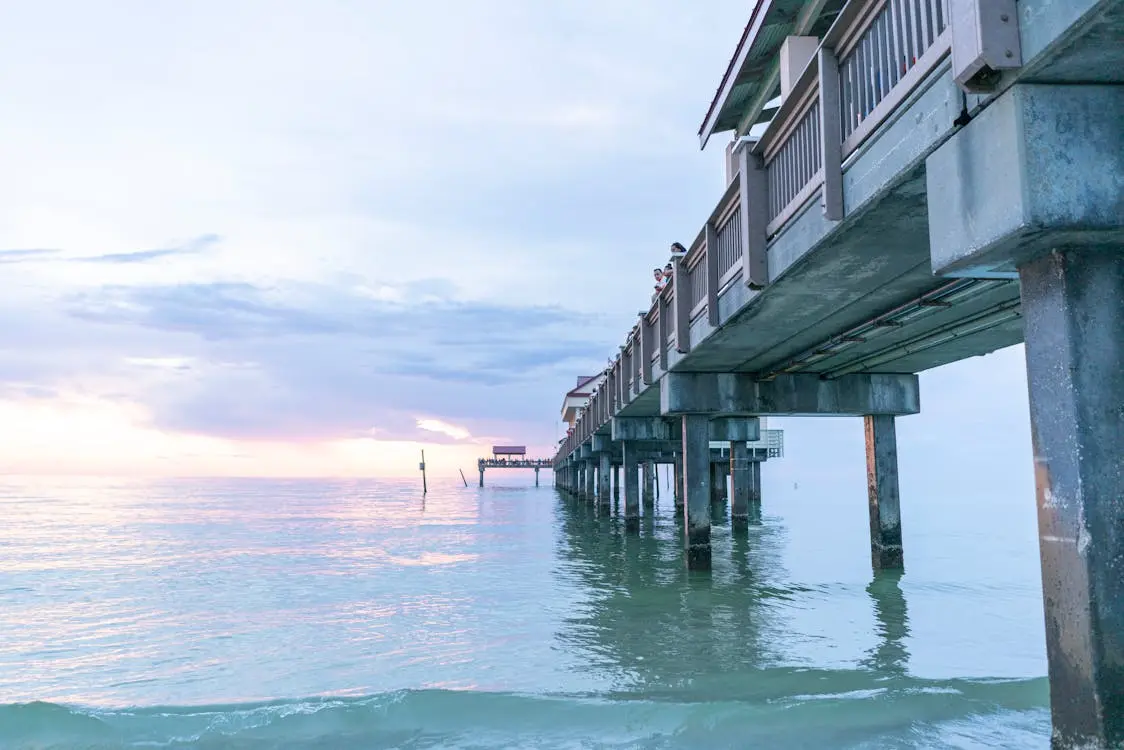Tarpon: Habitats - Piers
Table of Contents
- Fishing Piers for Tarpon
- Overview of Fishing Piers for Tarpon
- Features Around and Under Piers
- Tarpon Behavior Near Piers
- Targeting Tarpon Near Piers
- Live Baits & Lure Options
- Retrieve Techniques
- Gear Recommendations for Pier Fishing
- Spotting Tarpon
- Community and Expert Angler Tips
- Popular Search Terms Related to Piers for Tarpon
Fishing Piers for Tarpon

Image Credit: jared-lung on Pexels
Overview of Fishing Piers for Tarpon
Fishing from piers offers a unique and accessible way to target tarpon. Whether you're stationed on a pier extending into open water or fishing a pier that spans a channel or jetty at the inlet of an estuary, piers provide a stable platform and distinct microhabitats where tarpon congregate. The fixed position of a pier allows anglers to carefully observe tarpon behavior and adjust their tactics accordingly.
Features Around and Under Piers
-
Under-Pier Channels:
Many piers span channels where water flows more swiftly, funneling baitfish and creating feeding hotspots for tarpon. These channels often serve as natural corridors that tarpon use to transition between open water and sheltered areas. -
Pier Structure:
The vertical posts, pilings, and abutments of a pier create areas of turbulence and cover. Tarpon may lurk in these shaded zones, using the structure as an ambush point to strike at drifting prey. -
Piers on Jetties/Inlets:
When a pier is built on the jetty of an inlet, it forms a natural breakwater. The combination of deeper water and calmer sheltered areas along the pier attracts tarpon that are feeding or staging before a run.
Tarpon Behavior Near Piers
-
Location Relative to Piers:
Tarpon are often found swimming under the pier or around its edges, especially where a channel exists beneath. When the pier is positioned on an inlet, tarpon may be spotted moving between the open surf and the sheltered area under the structure. -
Behavioral Traits:
- Feeding Mode: Active tarpon frequently roll on the surface as they chase bait, a behavior that signals an excellent opportunity to strike.
- Cautious Ambush: In areas of shadow under the pier, tarpon may exhibit more reserved behavior, waiting patiently for prey to drift by.
- Large Female Tarpon: These tend to favor deeper parts of the channel or the outer edges of the pier structure and are typically more selective, requiring a refined presentation.
Targeting Tarpon Near Piers
Live Baits & Lure Options
-
Live Baits:
Pilchards and small baitfish that naturally occur in the area work well. They can be fished near pilings or in the channel under the pier to mimic the local forage. -
Lure Options:
Soft plastic lures that imitate injured baitfish or topwater poppers that create surface commotion are effective, particularly when tarpon are observed rolling on the surface.
Retrieve Techniques
-
Stop-and-Go Retrieve:
Alternate between periods of steady motion and brief pauses to simulate injured or drifting prey. This technique is especially effective under the pier when tarpon are cautious. -
Erratic Twitching:
Incorporate sudden, sharp twitches or jerks into your retrieve to imitate the erratic escape of wounded prey. This approach can provoke an explosive strike from tarpon already conditioned to more predictable presentations.
Gear Recommendations for Pier Fishing
Since fishing from a pier means you’re working from a fixed position, you should gear up for heavier, more powerful tarpon:
- Rod: A heavy-action rod in the 7–9 foot range is recommended to provide the sensitivity needed for subtle presentations and the power to handle explosive tarpon runs.
- Reel: Use a robust spinning or conventional reel with a high-capacity, smooth drag system.
- Line: A strong 50 - 65 lb braided line will help withstand the hard runs and sudden bursts of energy typical of tarpon.
Spotting Tarpon
Keep an eye out for tarpon rolling on the surface near the pier—this is a clear sign that they are in active feeding mode and ready to strike. Such behavior is your cue to cast your bait or lure into the action zone.
Community and Expert Angler Tips
- Learning from Videos:
Watching detailed video tutorials by expert pier anglers can provide valuable visual cues and techniques that you can adapt to your local conditions.
Click the thumbnail above to watch a detailed guide on fishing tidal marshes for tarpon.
For more tips, check out "fishing Piers for Tarpon tips" on YouTube
Popular Search Terms Related to Piers for Tarpon
| Search Term | Thumbnail | Link |
|---|---|---|
| Pier Tarpon Techniques | Watch Video | |
| Best Live Baits for Tarpon from Piers | Watch Video | |
| Pier Retrieve Strategies for Tarpon | Watch Video | |
| Where to Find Tarpon Near Piers | Watch Video | |
| Tarpon Surface Rolling at Piers | Watch Video |
Ask AI for More Info
Try our AI assistant for free—sign up to access this powerful feature.
👉 Sign Up to Ask AI